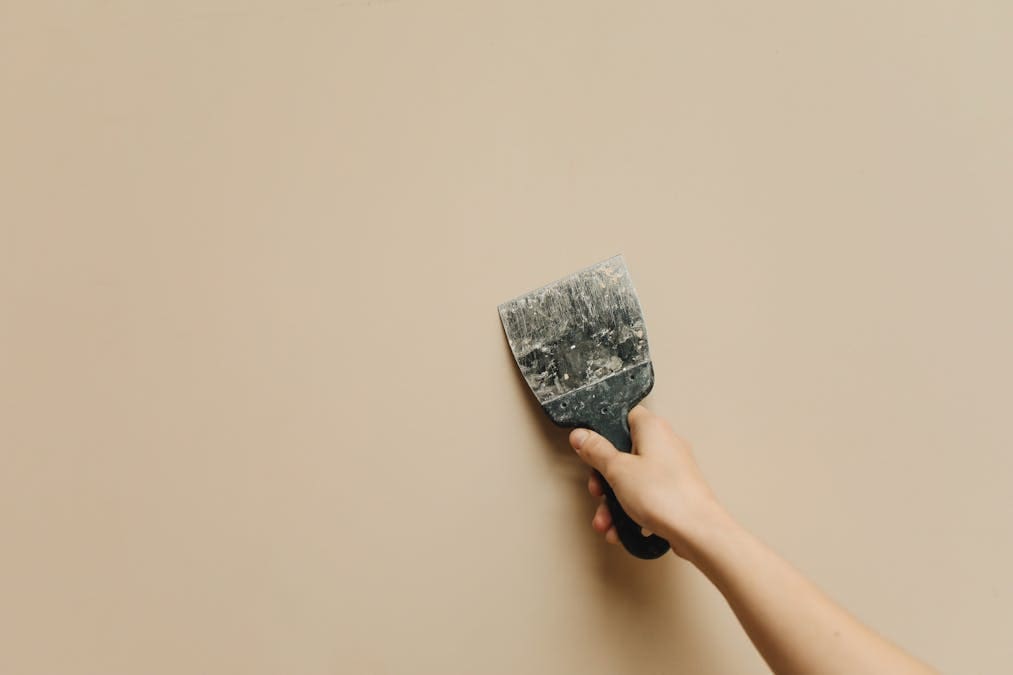
How Important Is Painting Preparation | Prep Smart Painting
Introduction
When it comes to giving your space a fresh look, painting is often the go-to solution. However, the success of your paint job lies in the meticulous process of painting preparation. In this guide, we will explore the nuances of painting preparations, debunk common misconceptions, delve into the consequences of inadequate preparation, and provide practical steps for a flawless paint job.
Whether you’re deciding to hire a painter or take the DIY route, understanding the essentials of painting preparation is critical to achieving a lasting and visually appealing outcome.
The Basics of Painting Preparation
Engaging in painting preparation goes beyond picking up a brush. It involves surface intricacies, material choices, and debunking misconceptions. Ensuring surfaces are ready for multiple coats of paint is crucial for a lasting and appealing result.
As Americans were estimated to spend a whopping $427 billion on home improvement projects in 2022, it’s vital to unravel the essentials of painting preparation and discern fact from fiction.
Common Misconceptions about Painting Preparation
Before delving into painting preparation steps, let’s clear up common misconceptions. Addressing these myths ensures accurate knowledge for a successful painting project.
Misconception 1: “Priming is Optional”
While some think priming is optional, it’s crucial, especially when using an oil-based primer in the painting process. Primer acts as a foundation, improving adhesion and ensuring a smooth, durable finish. Skipping this step risks uneven color and reduced longevity.
Misconception 2: “Any Paint Can Go Over Another”
Another common myth suggests any paint can be applied over another without preparation. Different paints need specific primers, especially when dealing with loose paint. Applying incompatible paints can lead to peeling, cracking, or an uneven finish.
Misconception 3: “Washing Walls Isn’t Necessary”
Contrary to a misconception, washing walls before painting is vital. It removes dirt and grease, ensuring a clean surface for paint adhesion. Skipping this step risks poor adhesion and a lackluster finish. Consider using a power washer with clean water for an effective wall-cleaning process.
Misconception 4: “A Single Coat Will Suffice”
While some think one coat suffices, multiple coats are often necessary, especially on porous or uneven surfaces. Cutting corners on coats may yield an incomplete and less durable finish, compromising the overall quality of the paint job.
Misconception 5: “Preparation Doesn’t Impact the Final Result”
A harmful myth is undervaluing preparation’s impact on the final result, especially when considering an exterior paint project. Proper preparation is the foundation for a successful paint job, ensuring longevity, even color, and a professional finish.
The Consequences of Inadequate Preparation

Skipping or rushing through the preparation phase can lead to many issues. From peeling paint to uneven finishes, discover the repercussions of inadequate preparation and why it’s worth the extra effort. Learn valuable insights on how to prep your house for painting to ensure a successful and lasting paint job.
Problems Caused by Improper Preparation
Poor Adhesion: Inadequate preparation causes poor adhesion, leading to issues like peeling and chipping, compromising your paint job’s quality and durability.
Mold Growth: Inadequate preparation fosters mold growth, posing health risks. Addressing mold concerns in preparation is vital for a safe and durable paint job.
Impact on Longevity: Thorough preparation ensures lasting durability, acting as a protective barrier against premature wear and tear in your paint job.
Real-life examples of painting disasters due to poor preparation
Examining real-life painting disasters due to poor preparation offers valuable insights into the consequences of shortcuts. These examples, coupled with the fact that homebuyers who recently purchased their homes invested $30,000 in remodeling in 2021, emphasize the crucial role of thorough preparation in avoiding pitfalls and ensuring a successful, visually appealing paint job.
Case 1: Peeling Paint
When proper surface preparation was neglected, the paint began to peel shortly after application, leading to both peeling and paint chips across the entire surface. Corrective measures were necessary to address the issue.
Case 2: Uneven Finish
A case study revealed that inadequate preparation led to an uneven finish on the walls. The lack of attention to surface imperfections resulted in a visibly inconsistent appearance, highlighting the significance of meticulous preparation for achieving a smooth and flawless paint surface.
Case 3: Premature Fading
In another instance, failure to adequately prepare the surface contributed to premature fading of the paint. This real-life example emphasizes how proper preparation plays a crucial role in maintaining the vibrancy and longevity of the paint, especially when using high-quality paint.
Steps in Painting Preparation
Now that we recognize the significance of preparation let’s delve into the practical steps, drawing insights from Walla Painting to ensure a smooth and lasting paint job.
Protecting items and surfaces in the painted area
One key aspect of painting preparation is safeguarding your belongings and surfaces. Discover effective methods to protect floors, furniture, and other items in the painted area, including using plastic drop cloths to minimize potential paint splatter.
Old paint removal
Before applying a fresh coat, old paint must go. Learn the best techniques for paint removal, whether dealing with latex or oil-based paints and discover the efficiency of a “paint scraper” in achieving a smooth and clean surface.
Repairing damages and imperfections
A flawless paint job starts with a smooth surface. Uncover tips for repairing damages, cracks, and imperfections, including the essential task of addressing nail holes, and discover the efficiency of wood filler for achieving a professional finish.
Old caulking removal
Caulking plays a crucial role in a seamless paint job. Find out how to properly remove old caulking and apply a fresh seal for a polished look, ensuring your paint job attains a “smooth finish” that exudes professionalism.
Special Considerations in Painting Preparation

Certain situations require special attention. Whether dealing with unique surfaces or environmental factors, we’ll guide you through the special considerations in painting preparation.
Tips and Tricks for Effective Painting Preparation
Unlock insider insights to streamline your painting preparation with these practical tips and tricks:
- Time-Saving Hacks: From efficient tools to smart workflows, these hacks save time without compromising quality
- Precision Techniques: Learn how to measure, tape, and cover surfaces with meticulous attention to detail, resulting in a more professional and polished finish.
- Material Selection: From brushes and rollers to primers and paints, understanding the best tools for the job is key to a successful preparation.
- Surface-Specific Strategies: Uncover strategies tailored to various materials, ensuring your preparation is effective and tailored to the unique demands of each surface.
- Preventing Common Pitfalls: Whether it’s addressing imperfections or managing unexpected challenges, these tips will help you navigate potential issues seamlessly.
- Organizational Techniques: From setting up a dedicated workspace to working tools and materials, organizational tips contribute to a smoother and more efficient preparation process.
Prep Smart Painting’s Approach to Painting Preparation
Explore a professional approach to painting preparation with insights from Prep Smart Painting. Discover our methods and how we ensure a superior finish on every project, providing valuable tips, including guidance on the best paint brush and valuable insights for home DIY projects like a do-it-yourself refinish kitchen cabinets initiative.
Conclusion
The key to a successful paint job lies in meticulous preparation. Professional Painters in Rhode Island emphasize taking the time to understand the surface, address misconceptions, and follow a systematic approach for the best results. Professional Painters in Connecticut and Professional Painters in Massachusetts agree that thorough preparation will result in a lasting and visually appealing outcome. By prioritizing these steps, you can ensure your painting project with Prep Smart Painting is a success.
FAQs
Q1: Can I just paint over old paint?
A1: Yes, but proper preparation is essential for a lasting finish. Ensure the old paint is clean, smooth, and free from defects before applying a new coat. Explore the nuances of painting over old paint for a flawless and durable result.
Q2: Can I use Dawn to wash walls before painting?
A2: Yes, Dawn can be an effective cleaner. Dilute it with water, wash the walls, and ensure they are completely dry before starting to paint.
Q3: How long does it take to paint a room after prep?
A3: The drying time varies based on humidity and paint type. Generally, wait at least 24 hours before applying the first coat and follow the paint manufacturer’s recommendations.






